What Wrinkles Does Botox Work On?
Botox works best for hyperfunctional facial lines
Botox works best for hyperfunctional facial lines. These lines are caused by the repetitive contraction of the underlying muscle which causes the wrinkles or creases in the skin.
Most common areas of treatment are: the glabella (frown lines or “11) horizontal forehead lines (from raising your brows), crow’s feet (from smiling or squinting) bunny lines on the sides of the nose (from squinting).
Less common sites are: perioral lip lines (from pursing ,drinking through a straw or smoking) , labiomental crease and peau d’orange (the wrinkle below the lip in the chin and the orange peel look to the chin) , mouth frown ( the down turned corners of the mouth), wrinkles in the neck.

A Doctor Injecting Botox Into Facial Muscles
It is best to start Botox earlier rather than later because Botox will also prevent the lines from deepening. It is important to keep up with your Botox and have repeated injections done when it wears off (usually 3-4 months).
This will maintain the smooth non-wrinkled appearance and keep the treated areas smooth. Very deep lines may also require filler in addition to the Botox. (Mary Ann Martinez, MD, Austin Dermatologist)
Botox works for “dynamic” lines and wrinkles
Lines on the face caused by excessive facial muscle contraction or movement respond to botox treatments. The botox temporarily weakens the muscle, which relaxes the skin in the area, which creates a smoother look.
This is best used for the crow’s feet area (sides of the eyes), between the eyes (glabellar area) and the horizontal lines of the foreheads.
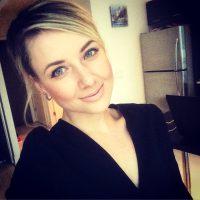
Botox Is The Toxin Made By Botulism Bacteria
It can be used in other areas but should be done conservatively. Lines caused by aging, such as the nasolabial folds (lines between the nostril and corner of mouth) are not typically treated with botox and are best treated with fillers (juvederm,radiesse, restylane).
Please consult with a board certified plastic surgeon for a comprehensive evaluation of your face and of the best treatment options. (William Bruno, MD, Beverly Hills Plastic Surgeon)
Botox used to treat expression lines on the face
Botox can be a very effective way to treat many of the wrinkles and lines on your face, but it can only work on a certain type of wrinkle/line. “Expression lines” are those wrinkles that are formed by the movement of your facial muscles.
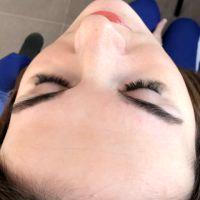
Botox Is Well-known For Its Wrinkle-reducing Abilities
Every time you make a expression with your face, certain facial muscles are contracting to create a particular expression. This can lead to crinkling/wrinkling of your facial skin. I often call these “active” lines because when you are asleep, your face tends to relax and the lines soften or disappear.
Some examples of these types of lines/wrinkles are the “11s” between your brows, the horizontal lines on the forehead, the crows feet around your eyes. Since Botox works by relaxing the muscle, you can see why these areas respond very well to Botox.
Experienced Botox injectors can also treat the fine lines around the mouth. Of course, the challenge is to soften the undesirable wrinkle lines, without sacrificing your ability to look natural–that is where the skill and experience of the injector comes into play. (Haresh Yalamanchili, MD, Houston Facial Plastic Surgeon)
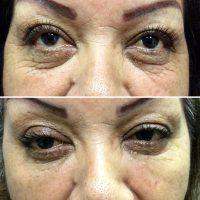
Botox Treatments Can Help Reduce Some Kinds Of Wrinkles
Botox works for many, but not all wrinkles
A general rule of thumb is that Botox works well above the nose, while fillers seem to work well below the nose. Of course exceptions exist. Botox works especially well on the forehead, frown lines, bunny lines (on the nose), upper lip lines and neck lines.
Folds on the lower part of the face, like the nasolabial (nostril area to corner of mouth) and marionette (corner of mouth to chin/jowl area), are better treated with fillers. (Daniel J. Ladd Jr., DO, Austin Dermatologist)
Botox for facial lines and wrinkles
Botox works on lines caused by muscle movement. Because it works by paralyzing the part of the muscle creating the lines, you can’t use it just anywhere on the face.
It works on the forehead, crows’ feet, between the brows, for lines on the side of the nose, and for some crinkles on the chin and neck. (Carmen Kavali, MD, Atlanta Plastic Surgeon)
Botox works from for frown lines and active wrinkles.
Botox usually works best for wrinkles that are active, meaning wrinkles that move with facial expressions. Areas include, the frown lines, forehead wrinkles, crows feet, bunny lines (lines on or around the nose), dimpling on the chin, neck bands and a few more that your doctor or nurse can help you identify. (David A. F. Ellis, MD, Toronto Facial Plastic Surgeon)
Botox for Facial Wrinkles: Where to draw the line
Botox is a very reliable medication when injected into certain areas by an experienced injector. It is approved for central forehead lines or the frown lines created by the corrugator muscles. These can be predictably softened by Botox injections as well forehead lines will disppear.
It can be injected for a brow lifting and brow shaping effect as well around the outer eyes for crows feet. Botox can be injected in the lower face with less predictable results. The effects last for three months and I would recommend you work with your Botox provider to refine the effect you desire. (Andrew P. Trussler, MD, Austin Plastic Surgeon)
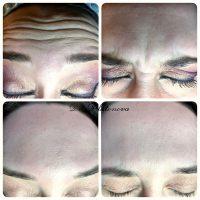
He Wrinkles Will Come Back After Three To Six Months
Botox is for “dynamic” lines
Botox is one of the best treatment alternatives that we have. It can substantially minimize, or prevent wrikles from muscle activity, and while not permanent, there is little downside. However, it will not improve wrinkles from sun exposure. (Darrick E. Antell, MD, Manhattan Plastic Surgeon)
Areas to Treat with Botox
Botox or Dysport works by relaxing the muscles of facial expression. The key is to relax those muscles enough to diminish lines and wrinkles, but not to drastically alter facial expression. The most common lines treated are in the upper third of the face or three areas: horizontal forehead lines, vertical “frown” lines, and lines around the eyes (crow’s fee).
The static lines and creases of the lower part of the face are best treated with fillers like juvederm and restylane. (Roy A. David, MD, San Diego Facial Plastic Surgeon)

Lines Around Your Mouth Generally Aren’t Treated With Botox
Botox works for various areas on the face for wrinkle reduction.
Botox can be used in the frown area, the forehead area, around the eyes to prevent and diminish wrinkles.
Other great areas are in the upper lips to minimize vertical lip lines and into the bands on the neck to decrease the look of pulling on the neck.
The duration of results in each area varies depending on amount of units used and frequency of treatment. (Grace Liu, MD, Newport Beach Dermatologic Surgeon)
Botox works on dynamic lines
Botox works by selectively paralyzing the underlying muscle to relax the overlying skin. So, the effect is most dramatic on dynamic wrinkles (wrinkles with movement). Over time, the skin can heal and even static wrinkles will improve.
Botox is safe and effective for lines around the eye, between the eyebrows and on the forehead. Botox can be used in other parts of the face and body, but please make sure that you are seeing a highly trained, board certified plastic surgeon with extensive experience in Botox treatment. (David Shafer, MD, FACS, New York Plastic Surgeon)
Botox is great for some lines and useless for others.
Botox works by weakening muscles that pull together to crease the skin. This works great between the eyebrows, but can be a problem trying to use it around the mouth, since if you weaken the mouth muscles you may have trouble speaking or drinking fluids! It does not work for deep cheek folds, but does help for eye wrinkles known as “crows’ feet”.
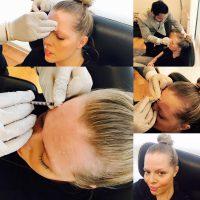
Temporarily Reducing Wrinkles
See a well-trained, conservative, and artistic board-certified dermatologist or plastic surgeon for your treatment. There IS a difference between generically placed, unsophisticated Botox, and “good Botox”. And surprise… “good Botox” may even be cheaper!. (Jessica J. Krant, MD, MPH, New York Dermatologic Surgeon)
Botox works for some wrinkles
Botox works by paralyzing muscles. Therefore, any wrinkles that are due to muscle activity can potentially be treated with Botox. The lines that form in the forehead or around the eyes (crow’s feet) are due to muscle contraction.
Botox works very well in these areas. However, deeper “wrinkles” such as around the mouth are not due to muscle action and are due to drooping skin and fat.
These areas are better treated with fillers such as Juvederm. (Naveen Setty, MD, Dallas Plastic Surgeon)
Wrinkles from movement do well with Botox
If moving your face causes wrinkles and you don’t need that movement then Botox is great. Be careful not to have treatment on a movement that is needed (like smiling!). A pleasant result rather than a frozen face depends on an experienced injector and good communication about your desired result. (Susan Van Dyke, MD, Paradise Valley Dermatologic Surgeon)
